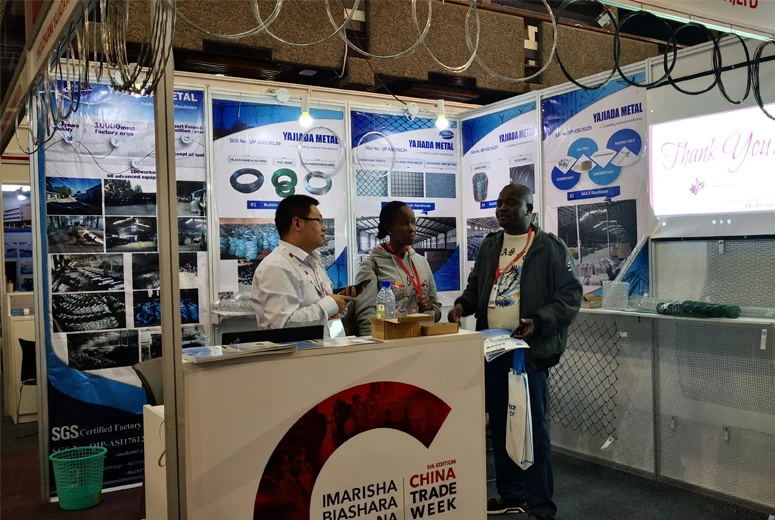Understanding Weld Mesh Sheets Prices
Weld mesh sheets, commonly referred to as welded wire mesh, are integral components in many construction and industrial applications. These sheets are made from high-quality steel wires arranged in a grid pattern and are welded at their intersections. They serve various purposes, including support, reinforcement, and protective barriers in both residential and commercial settings. This article aims to provide insights into the factors influencing the prices of weld mesh sheets and how to make informed purchasing decisions.
Factors Influencing Prices of Weld Mesh Sheets
1. Material Quality The price of weld mesh sheets is significantly influenced by the type of material used. Sheets made from stainless steel are generally more expensive than those made with mild steel due to their enhanced durability and resistance to corrosion. Galvanized options also tend to be higher in price but offer additional protection against rust and environmental wear.
2. Wire Diameter The thickness of the wire used in the mesh affects its overall strength and, consequently, its price. Thicker wires require more raw materials, leading to increased costs. Depending on the intended application, customers must balance their need for durability against their budget constraints. For example, agricultural applications might require heavier gauge meshes, while lighter meshes may suffice for temporary fencing.
3. Mesh Size and Pattern The dimensions of the mesh openings and the overall sheet size can have a notable impact on pricing. Smaller mesh openings often demand more labor and material, resulting in higher costs. Furthermore, customized mesh sizes or specific patterns may incur additional manufacturing fees. Buyers should carefully consider their requirements to avoid overspending on unnecessary features.
4. Manufacturing Processes The method used to produce the weld mesh sheets can also dictate their price. Sheets that undergo additional processes, such as coating, bending, or cutting to specific dimensions, will be priced higher due to the extra labor and materials involved. Understanding the manufacturing processes can help buyers determine the value of the product relative to their needs.
5. Market Demand As with any commodity, market demand greatly impacts prices. During periods of high construction activity, demand for weld mesh sheets tends to rise, leading to increased prices. Conversely, when demand decreases, prices may stabilize or drop. Staying updated on market trends can help buyers make timely purchasing decisions.
6. Location and Shipping Costs Geographical location plays a crucial role in determining the final cost of weld mesh sheets. Buyers situated closer to manufacturing facilities may benefit from lower shipping costs. Conversely, those in remote areas may face higher logistical fees, affecting the overall price. It’s essential for buyers to consider these factors when comparing prices from different suppliers.
weld mesh sheets prices

7. Supplier and Brand Reputation The reputation and credibility of suppliers can also influence pricing. Established brands with proven quality standards often carry higher prices, justified by their reliability and warranty policies. Choosing between trusted suppliers and cost-effective alternatives can be challenging, but prioritizing quality can lead to long-term savings by reducing the likelihood of product failures.
Making Informed Purchasing Decisions
To ensure you are getting the best value for your money when purchasing weld mesh sheets, consider the following steps
1. Research Suppliers Look for reputable suppliers with positive reviews and a history of delivering quality products. Comparing multiple suppliers can help you identify competitive pricing and potential bulk discount opportunities.
2. Compare Specifications Carefully analyze the specifications of the weld mesh sheets being offered. Consider the gauge, material type, and any additional treatments (such as galvanization) to make an accurate comparison.
3. Request Quotes Contact suppliers directly to obtain detailed quotes, including potential hidden costs such as shipping, taxes, and handling fees. This helps avoid unexpected expenses.
4. Evaluate Long-term Needs While it may be tempting to opt for the cheapest option, consider the long-term durability and performance required for your specific application. Sometimes, investing slightly more in higher quality can result in significant savings over time.
5. Stay Informed on Market Trends Monitor industry trends and market conditions to anticipate potential price fluctuations. Being knowledgeable can assist in making timely and cost-effective purchases.
In conclusion, understanding the various factors that influence weld mesh sheets prices can empower buyers to make informed decisions. By carefully considering quality, specifications, and market conditions, purchasers can find the right balance between cost and functionality for their specific needs.

















